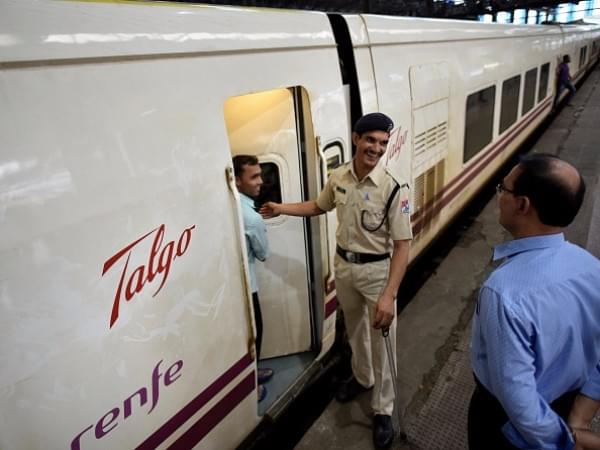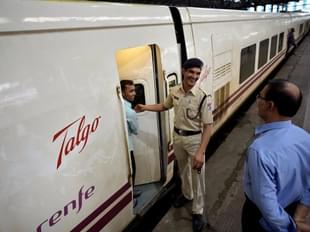Infrastructure
Talgo Trains Not Here Yet; We Might Have To Wait Longer For Faster Trains
Swarajya Staff
Aug 10, 2017, 01:06 PM | Updated 01:06 PM IST
Save & read from anywhere!
Bookmark stories for easy access on any device or the Swarajya app.


Despite a successful trial run of Talgo’s trains on Indian rail tracks last year, the government has been unable to commission the Spanish manufacturer’s trains.
Earlier this year, the government decided that, instead of acquiring the trains, it would lease them from Talgo and operate them in India.
This was also the first time a foreign company conducted field trials on India’s tracks. Quite an achievement thus far.
But, then, what exactly is holding it up?
Railway Ministry officials said a committee had highlighted a series of problems with the ambitious project, including the fact that such a large order size, technical changes to train design and high lease costs could not go through without competitive bidding. An official said, “We do not have a framework to roll out tenders for trains manufactured by Talgo, as a single-player bid would prove to be ineffective.”
Talgo’s director for India and Asia Pacific, Subrath Nath, told The Hindu that the company’s aim was to manufacture in India, and that the specifications floated by Indian Railways in the tender did not enable it.
Railway officials said the government had initially planned to lease four trains, subject to a lengthy tendering process. Responding to this, Nath said Talgo had not conducted trials just for trains to be leased, and was looking to manufacture them in India.
Once the government gives the green light, the trains would arrive in India within a year and commercial operations would begin, since Talgo trains can be run on existing Indian tracks. However, due to inordinate delays on the part of the government, the expected roll-out in 2018 might have to be pushed back to 2019.
The government officials said that their only worry is that Talgo is the only company to offer such a product and there are no competitors to fight a tender bid. In reply to this, we said that we are ready to fight an open tender and wish to follow government procedures. But it’s already May 2017 and no progress has taken place.Subrath Nath, Director, India and Asia Pacific of Talgo
To solve this mess, the government would need to amend its tendering process so that individual companies without competition can take part in it when the situation demands. Otherwise, if the government chooses to wait for competition to make such bids, India loses out on getting high-speed rail. This, in turn, disincentivises foreign manufacturers looking to invest in India.
The railways is already the most under-represented segment in innovation and adoption of new technology due to several requirements in the tendering stage. If Talgo backs out, it would send a signal to the world that India is not ready for foreign investment in railways, a perception the sector desperately needs to avoid.





